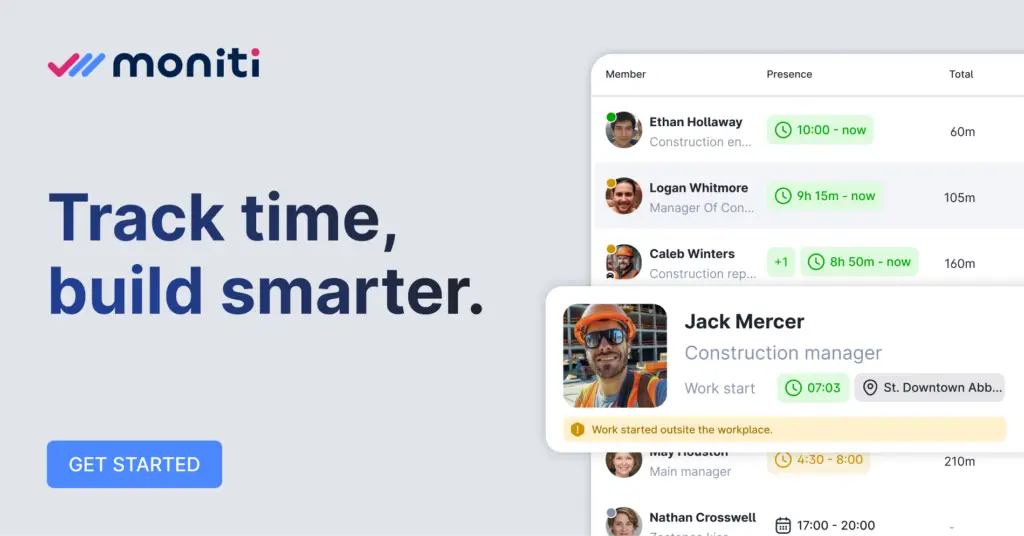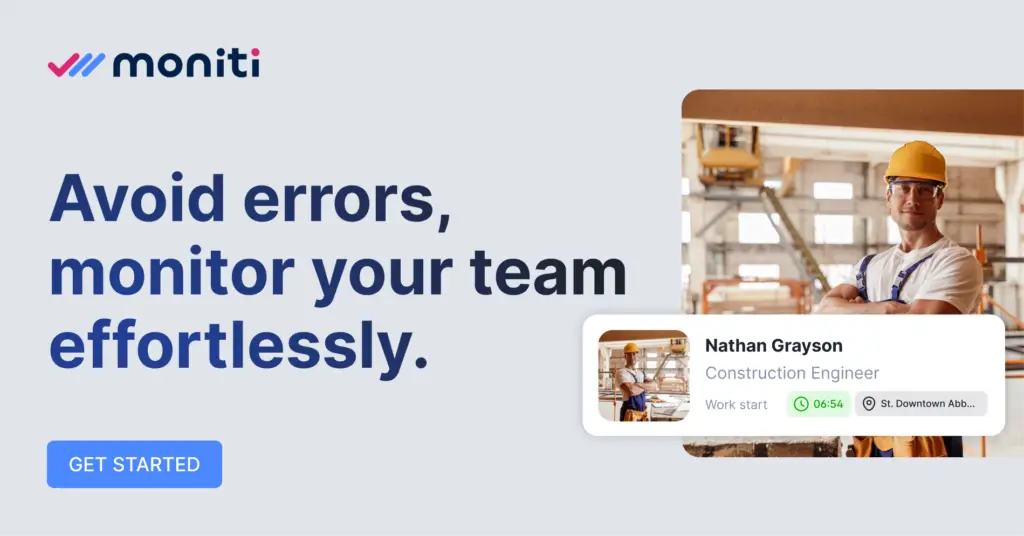Table of Contents
How to manage subcontractors effectively with time trackers and project tools? 7 Best Practices
Managing subcontractors effectively is a critical part of successful project execution in industries like construction, manufacturing, and large-scale event planning. Subcontractors play a vital role in completing specific tasks or portions of a project, but coordinating their efforts can be a challenge. Issues such as missed deadlines, miscommunication, or lack of accountability can cause delays and budget overruns.
To address these challenges, modern project management tools, particularly time trackers and task management platforms, have become indispensable. These tools help improve communication, track progress, and ensure tasks are completed on time and within budget. Below are seven best practices for managing subcontractors using these tools to achieve efficiency and project success.
1. Define Roles
and Responsibilities Clearly
The first step to effective subcontractor management is ensuring that everyone understands their role. Time trackers and project tools make it easier to:
- Assign Specific Tasks: Clearly outline what each subcontractor is responsible for and set expectations using task delegation software.
- Provide Documentation: Upload contracts, blueprints, or instructions directly into a shared platform for easy access.
- Clarify Deadlines: Set deadlines for each task, ensuring subcontractors are aware of timelines and dependencies.
Clearly defined roles prevent overlapping responsibilities and ensure accountability.
2. Use Time Trackers
to Monitor Progress
Time tracking tools are invaluable for keeping subcontractors on schedule. They allow project managers to:
- Track Hours Worked: Ensure subcontractors are logging accurate work hours, avoiding disputes over billing.
- Monitor Task Completion: Identify whether tasks are progressing as planned or if delays are occurring.
- Spot Inefficiencies: Use data from time trackers to analyze how subcontractors are spending their time and adjust workflows accordingly.
By regularly reviewing time-tracking data, managers can intervene early if tasks start to fall behind schedule.
Task delegation isn’t just about technology—it’s about ensuring that everyone knows their role and has the tools they need to succeed. Combining physical construction tools with apps can enhance clarity and accountability.
If you want to find out more, you should also read this article How to optimize ROI with accurate time tracking?
3. Communicate Regularly
and Effectively
Effective communication is key to ensuring smooth collaboration. Project management tools facilitate this by offering:
- Centralized Messaging: Keep all conversations, updates, and clarifications in one place.
- Instant Notifications: Notify subcontractors of changes to tasks, priorities, or schedules in real time.
- Progress Updates: Request regular progress reports or check-ins to ensure alignment with project goals.
Regular communication fosters a collaborative environment and minimizes misunderstandings.
4. Establish Measurable Milestones
Breaking a project into smaller milestones makes it easier to track progress and keep subcontractors accountable. With the help of project tools, you can:
- Set Milestone Deadlines: Assign specific deadlines to each milestone, ensuring subcontractors stay on track.
- Measure Performance: Use time trackers to compare actual progress against planned timelines.
- Reward Achievement: Recognize subcontractors who consistently meet milestones to encourage continued high performance.
Milestones create a clear roadmap for subcontractors, reducing confusion and improving project visibility.
5. Ensure Transparency
in Payments
Disputes over payments can harm subcontractor relationships and slow down projects. Time trackers and project tools simplify payment processes by:
- Providing Work Logs: Use tracked hours and completed tasks as evidence for payment calculations.
- Automating Invoices: Generate accurate invoices directly from time tracking data, reducing administrative overhead.
- Maintaining Payment Records: Keep a record of all payments made to subcontractors, ensuring transparency and accountability.
Clear and fair payment processes build trust and encourage subcontractors to stay committed to the project.
6. Use Real-Time Data
for Decision Making
Real-time data from time trackers and project management tools can help managers make informed decisions. Benefits include:
- Identifying Bottlenecks: Pinpoint areas where subcontractors may need additional support or resources.
- Adjusting Schedules: Reallocate tasks or extend deadlines based on current progress and delays.
- Optimizing Resource Allocation: Use insights to allocate labor and materials where they are most needed.
Access to live data ensures that project managers can respond proactively to challenges, minimizing disruptions.
If you want to learn more and choose the right tools for monitoring work time, be sure to read this article.
7. Build Long-Term Relationships with Reliable Subcontractors
Efficient tools and practices not only help with individual projects but also foster strong relationships with reliable subcontractors for future work. Best practices include:
- Performance Reviews: Use time tracking and task completion data to evaluate subcontractor performance objectively.
- Feedback Sessions: Provide constructive feedback based on data insights, helping subcontractors improve.
- Recognition and Incentives: Acknowledge subcontractors who consistently deliver quality work on time.
Building a network of trusted subcontractors reduces the risk of delays and ensures smoother operations in future projects.
Practical Application Example
Imagine a construction manager overseeing a building project with multiple subcontractors responsible for different aspects, such as electrical work, plumbing, and painting. Using time trackers and project tools, the manager can:
- Assign specific milestones to each subcontractor, such as completing wiring for a specific floor.
- Monitor progress using real-time time-tracking data to ensure tasks are on schedule.
- Communicate changes in project scope or deadlines instantly through a centralized messaging platform.
- Use time-tracking logs to verify hours worked and automate payment calculations.
- Identify delays in plumbing tasks and reallocate resources to avoid cascading delays in subsequent milestones.
By following these steps, the manager ensures that the project remains on track and within budget, with minimal disruptions.
Moniti as Your
efficiency ally
Optimizing construction projects goes beyond choosing high-quality tools—it requires effective solutions to ensure smooth operations and successful project outcomes. Task delegation and time tracking, once considered supplementary, are now essential for managing modern construction environments.
Moniti.app stands out as a comprehensive solution that integrates task scheduling and real-time tracking into one platform. By using tools like Moniti, construction managers can monitor employee hours, streamline task assignments, and optimize workflows, ensuring every resource is utilized effectively and every project phase runs seamlessly.
Implementing Moniti not only enhances operational efficiency but also supports a well-structured, forward-thinking strategy for construction project management. Whether managing large-scale developments or smaller projects, leveraging these tools can make all the difference in maintaining balance and improving overall performance.





